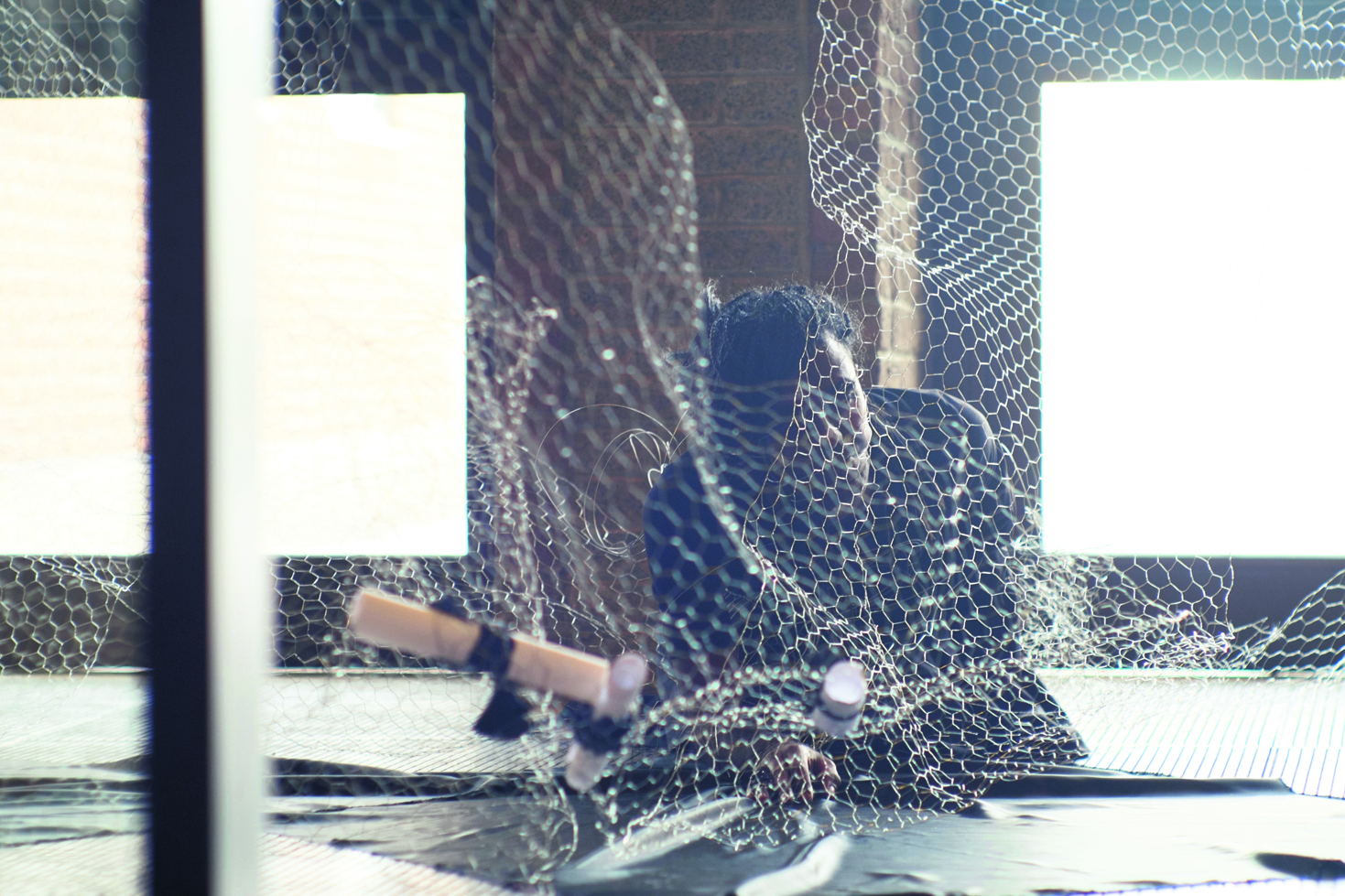Kama La Mackerel’s performance piece and installation, UN/FREEZE, took place at the entrance of the Faculty of Education building on November 23. In her two hour performance, the artist moved excruciatingly slowly on black cloth to evoke the discomfort of freezing. With chicken wires around her body, her restricted movement and contorted postures represented the incapacitating disempowerment felt by marginalized bodies trapped in inequitable power dynamics.
Kama La Mackerel is a Montreal-based performer, story-teller, and multi-disciplinary artist who explores themes of resistance and healing for marginalized communities through aesthetic practices. As a trans woman of colour, Kama La Mackerel is no stranger to microaggressions, particularly those perpetrated within transmisogynist, ableist, and imperialist institutions against her body.
The performance, though uncomfortable to watch, was cathartic through its dissection of the physical and emotional “freezing” that many marginalized people experience when they aren’t acknowledged or denied authority.To paraphrase her own description of the piece, the freezing response may arise from feelings of shock or disempowerment. It may serve as a coping mechanism, or a default reaction to a microaggression when responding is risky or requires too much emotional, physical, and mental labour. Her performance reflected this debilitating reaction that renders the individual incapable of anything but micro-movements that emphasize the painful heaviness of the systems of power as they enact violence upon marginalized bodies.
Such systems are represented by the chicken wires. The artist wore thick layers during her micro-contortions to symbolize the thick skin and resilience of marginalized people fighting for survival in an unsafe environment. Spectators were invited to participate by writing about a time when they have experienced a microaggression within an institution and to roll the testimony and attach it to the wire that restricts the artist’s movement. They can then come into the performance space and reflect on their experience, breathing deeply to let go of all the heaviness associated with the trauma.
After her performance, the artist mentioned that the freezing response is not a complete cessation of activity as it would appear to the aggressor. Instead, the survivor is still alive. They still have thoughts and feelings and a beating heart throbbing under their immobile outer shell. Kama’s dynamization of the freezing response introduces the audience to the inner perspective of the survivor, thus empowering the survivor and encouraging observers to slowly release their heavy emotions along with the contortions of the artist’s burdened body.
What was left of the installation post-performance was reminiscent of a school graduation: the white sheets bearing the testimonies were rolled up and tied with a black ribbon, suspended in the chicken wire. The creased black fabric partly covering the floor beneath the wires is similar to a graduation gown and gives observers the impression that a struggle occurred within the space but that the individual has managed to escape, leaving behind traces of their pain through the testimonies and the marks of her body on the fabric.
Overall, this piece explores the internalization of oppression and its effects on the survivor’s movements and emotions. Ultimately, Kama La Mackerel sends a message of resilience by examining the pain through her evocation of a graduation from an internalized submission to the aggressor to an externalized expression of the survivor’s feelings and struggles. The artist expresses hope that marginalized people can break themselves free from society’s projection that they are voiceless and traceless as they move toward being an agent within oppressive institutions.

